close
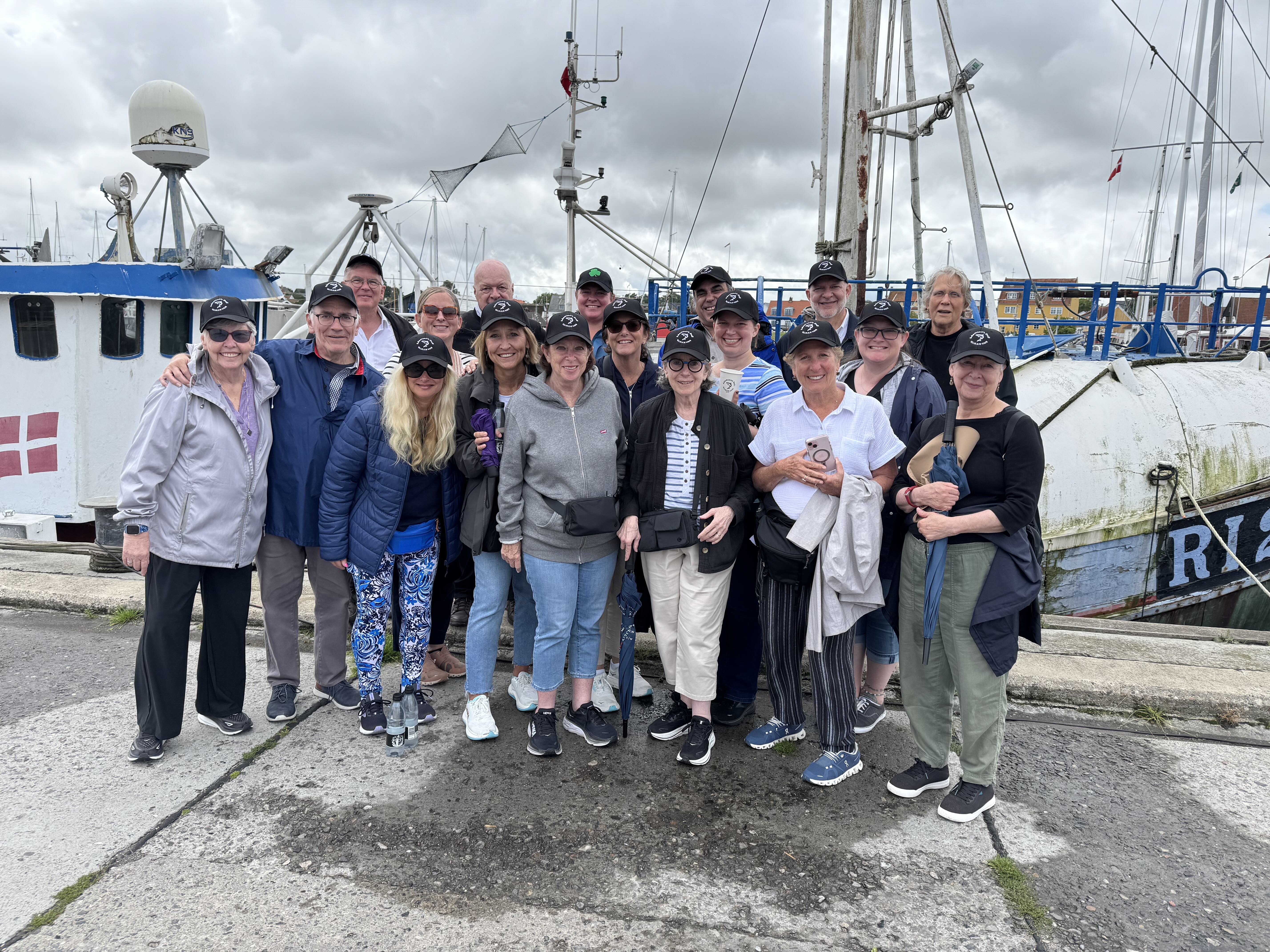
2025 EUROPEAN STUDY PROGRAM TO THE NETHERLANDS, GERMANY, AND DENMARK
On July 2, 2025, 15 JFR Alfred Lerner Fellows and Professor Robert Jan van Pelt arrived in Amsterdam and we walked through the former Dutch Jewish neighborhood. We saw several Holocaust memorials and a number of stolpersteine, “stumbling blocks.” These are small brass plaques that commemorate victims of Nazi Germany. They are usually placed in front of the person’s last voluntarily chosen place of residence before being deported by the Nazis.
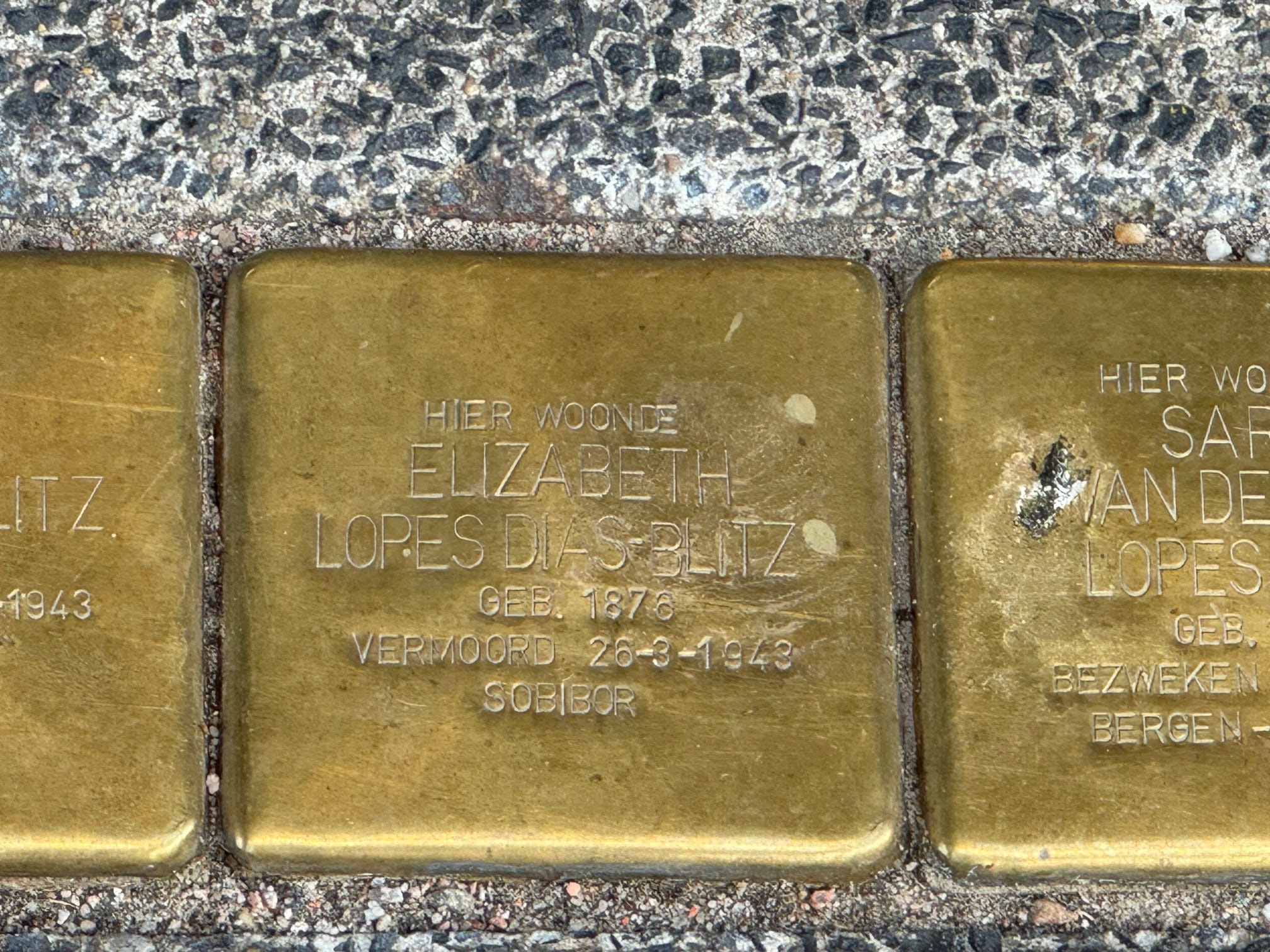
Our next day was spent in the Jewish Quarter of Amsterdam. We took trams and walked - it gave us an excellent exposure to Amsterdam from the ground and not from a tour bus.
Professor van Pelt not only lectured on the historiography of the Holocaust in the Netherlands, but he challenged each participant to think critically. He discussed memory and memorialization. He provided in-depth historical background that predated the Holocaust. We stopped at the National Holocaust Names Monument, which commemorates the approximately 102,000 Jewish victims from the Netherlands without a grave. Robert Jan stopped by the plaque for his uncle for whom he is named. We also saw the plaques of the Frank family.
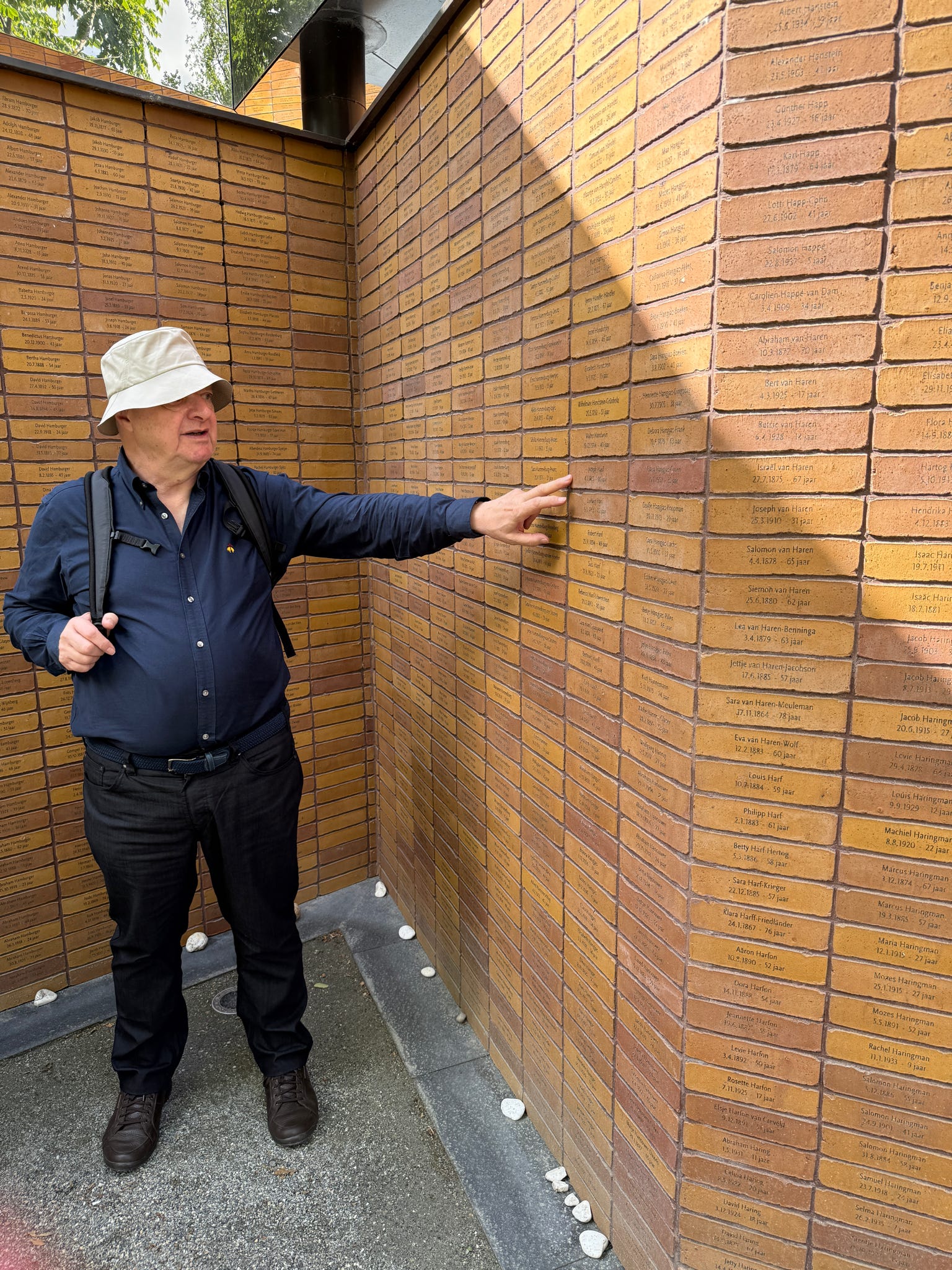
We walked to the Portuguese Synagogue, which was magnificent. Robert Jan gave an outstanding lecture on the synagogue. Our next stop was the Jewish Museum. We had lunch in the museum’s cafe. We then went to the National Holocaust Museum where a senior staff member gave a lecture on the history of the museum and the approach taken in designing the museum. Our last stop of the day was at the Hollandsche Schouwburg, the place from which Amsterdam’s Jews were deported.
The next day we went to Merwedeplein, the area in Amsterdam where the Frank family lived until they went into hiding in July 1942. German Jewish refugees mostly populated this area. We were granted access to the Frank family home where the family lived from November 1933 until July 1942. This was a very special experience for each of us. We then traveled to the Anne Frank House where we had a special program and then toured the Secret Annex. The day ended outside of Amsterdam where we had Shabbat dinner and met relatives of Professor van Pelt who shared their family’s story during the Holocaust.
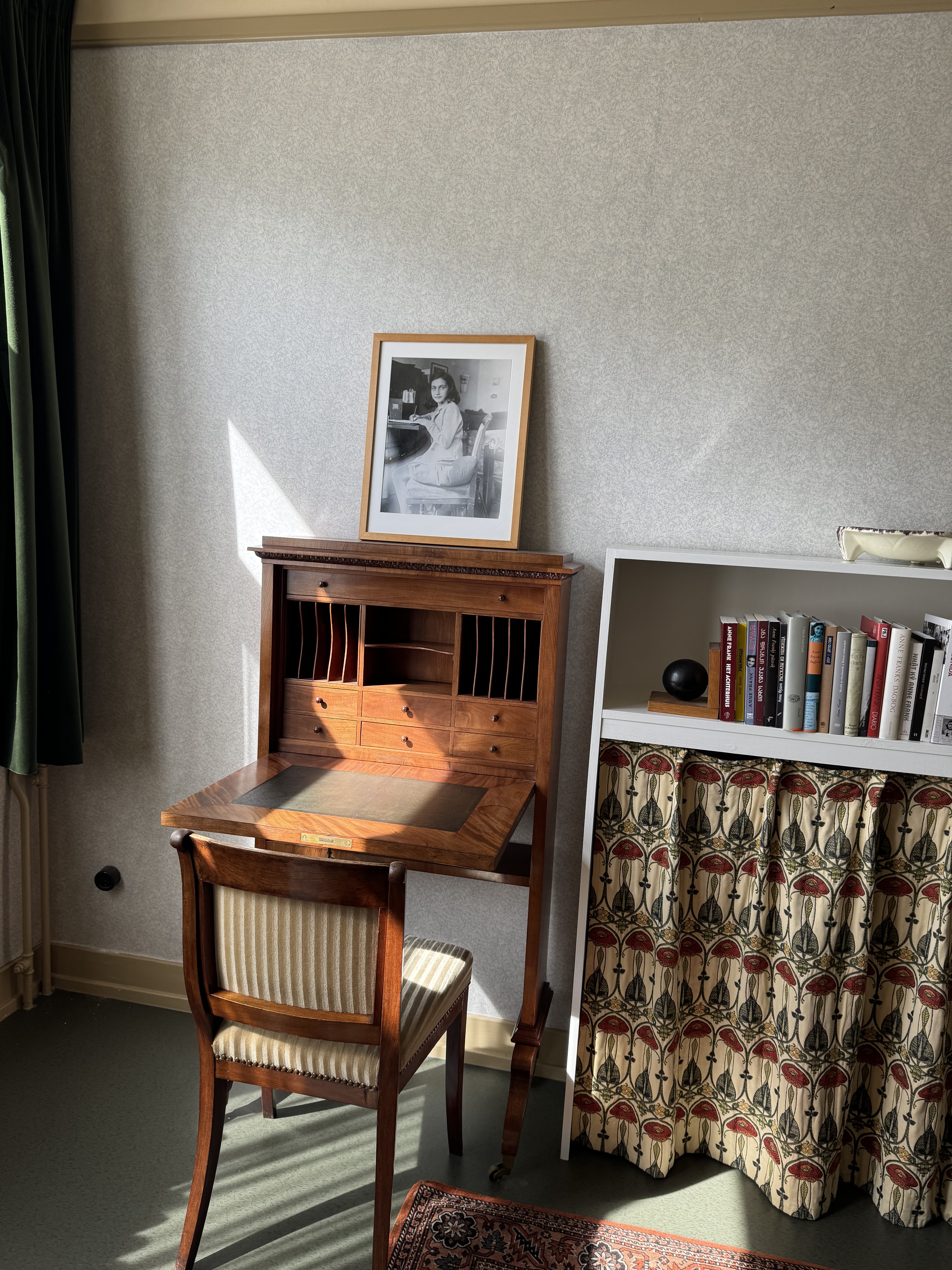
The next day we left for the Felix Nussbaum Haus in Osnabrueck, Germany. The museum was one of the highlights of the program with many of the teachers designing classroom activities around Nussbaum’s art. We arranged for our group to have a private tour of the museum. We then traveled to Bergen-Belsen where we walked through the camp and the exhibition.
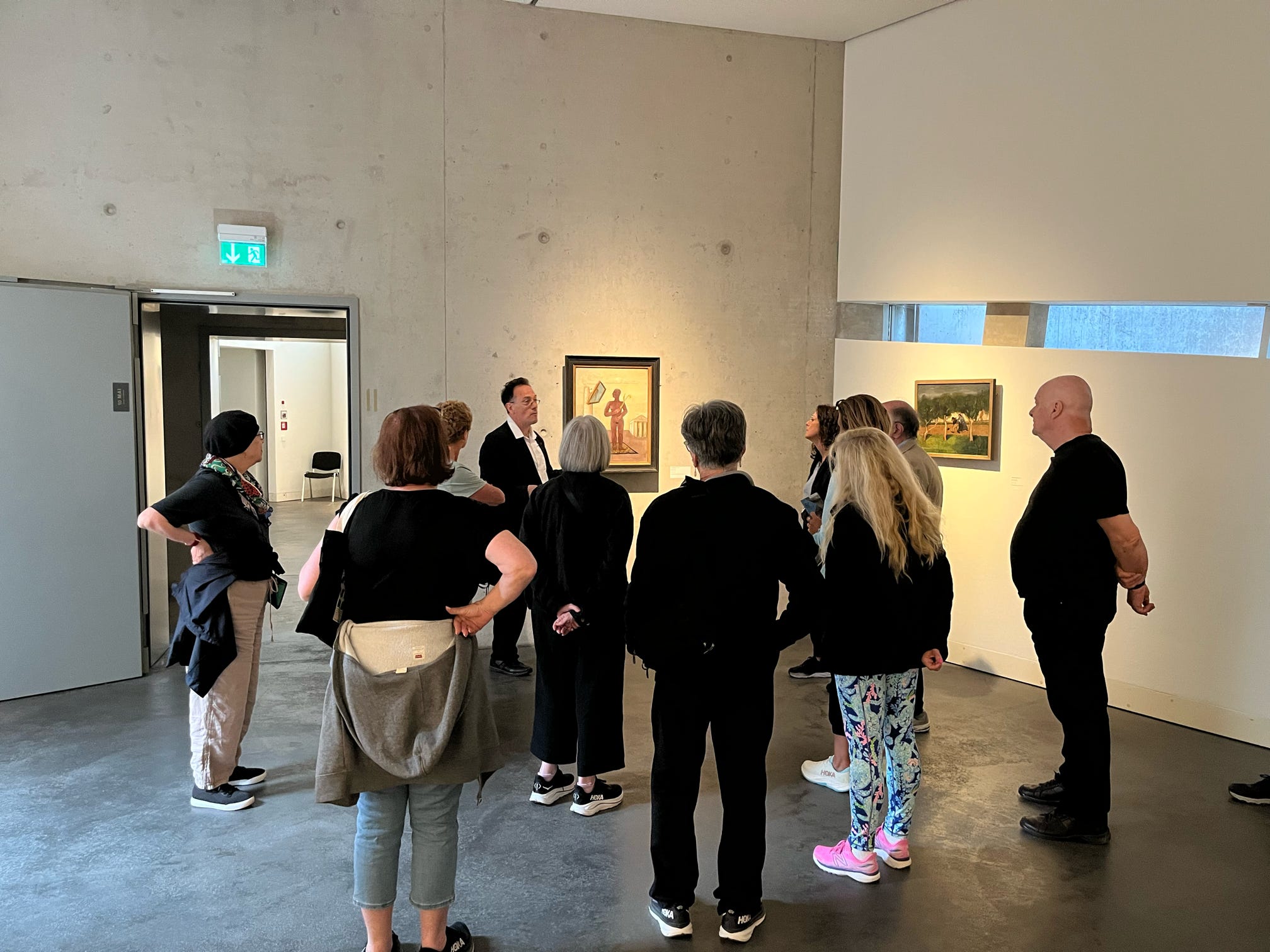
On Sunday, we were in Felsenberg, Germany which was the last seat of the Third Reich. In Felsenberg we met Professor Therkel Straede, our Danish Holocaust scholar. We drove to Froeslev a preserved internment camp for captured members of the Danish Resistance. In Froeslev, we saw one of the few remaining “white buses.” The “white buses” was a Swedish humanitarian operation that brought Scandinavians in German concentration camps back to Sweden. The white buses belonged to the Swedish Red Cross. After visiting the Froeslev Camp we arrived in Copenhagen in time for dinner.
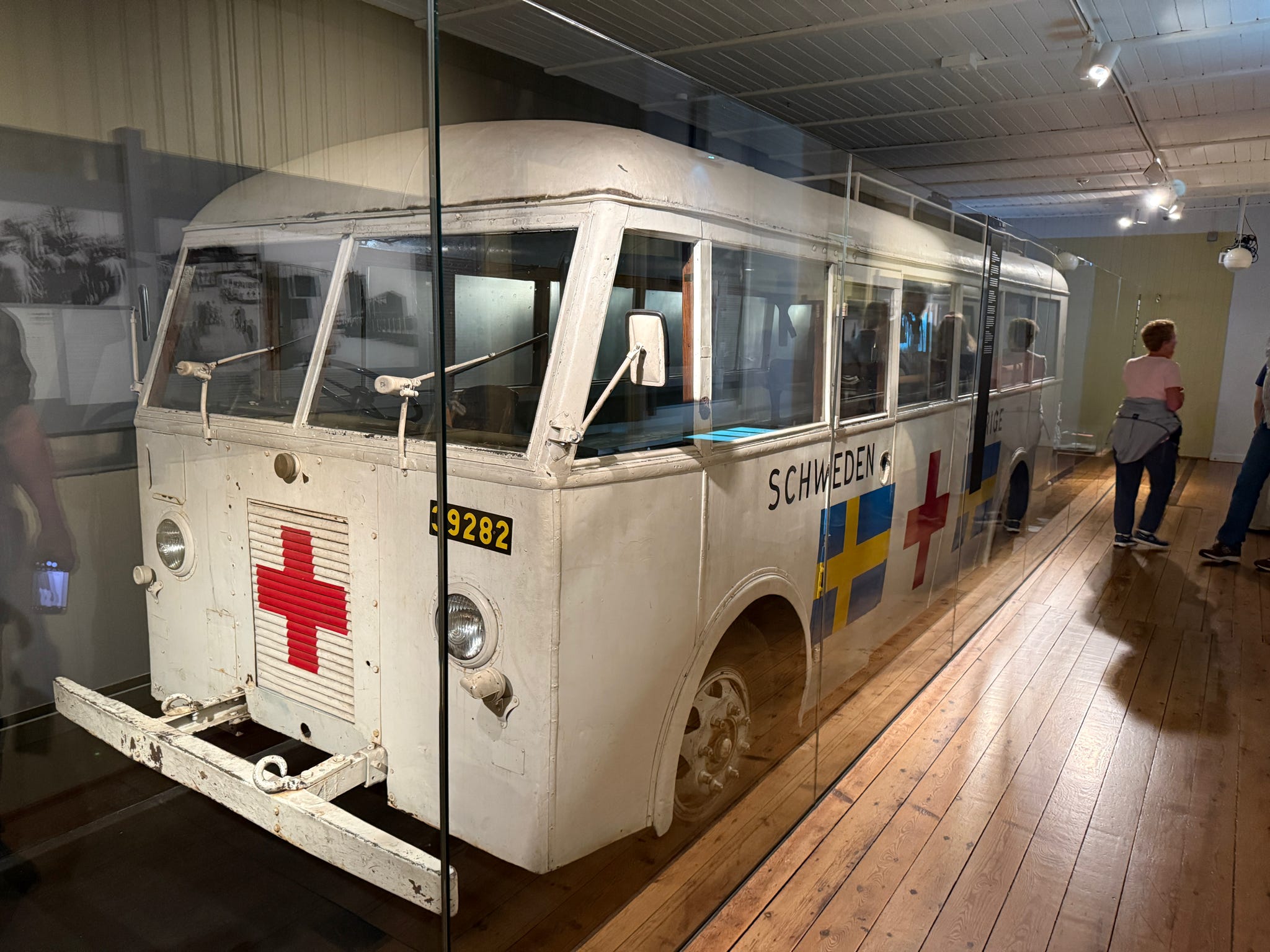
The next day we went up the coast to Gilleleje to the church where Jews were hiding waiting to go to Sweden. Unfortunately, they were denounced. We boarded a ferry and went to Malmo, Sweden where we met David, one of the leaders of the Malmo Jewish community. David walked us through the Malmo Jewish cemetery. We came upon the marker for Deborah Knicker, Roman Kent’s sister. Roman was the JFR’s long-time president until his passing in May 2021. After liberation, Deborah went to Sweden for medical treatment arriving in June 1945. She died in August 1945.
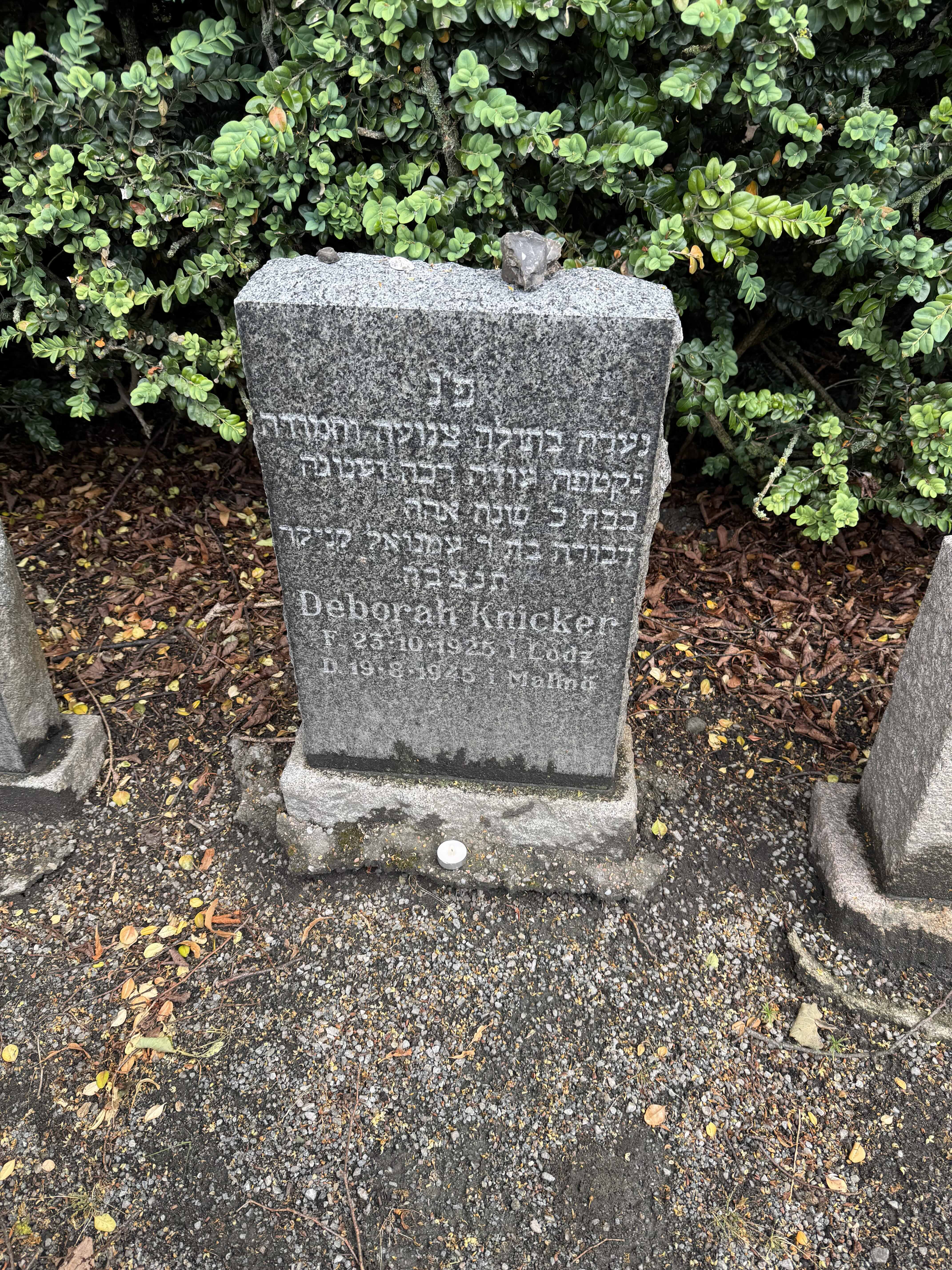
During our remaining time in Denmark, we visited several Holocaust memorial sites including a brick factory that hid more than 260 Jews in the factory. We visited the Danish resistance museum where they featured Dr. Jorgen Kieler, a Danish rescuer who was a good friend of the JFR. The JFR honored Dr. Kieler and his sister Elsebet in 1993. We went to the synagogue in Copenhagen.

We said good-bye to each other at dinner the night before our group departed for home.
As Amy McDonald wrote in her reflection paper upon her return to Birmingham, Al
"Participating in the JFR European study program to Amsterdam, Germany, and Denmark was profoundly impactful for me. Each location provided a different lens through which to view the devastating effects of the Holocaust, as well as examples of incredible bravery and courage. All of these locations were 'firsts' for me… Before this study program, I did not know that over eighty percent of Dutch Jews perished in the Holocaust. I also did not know that nearly ninety five percent of Danish Jews were saved by their non-Jewish countrymen. There are so many relevant lessons and implications here. As I work on creating the Alabama Holocaust Education Center’s new online Educator Toolkit, I will be creating lessons on these topics for teachers throughout the state of Alabama to use and implement."
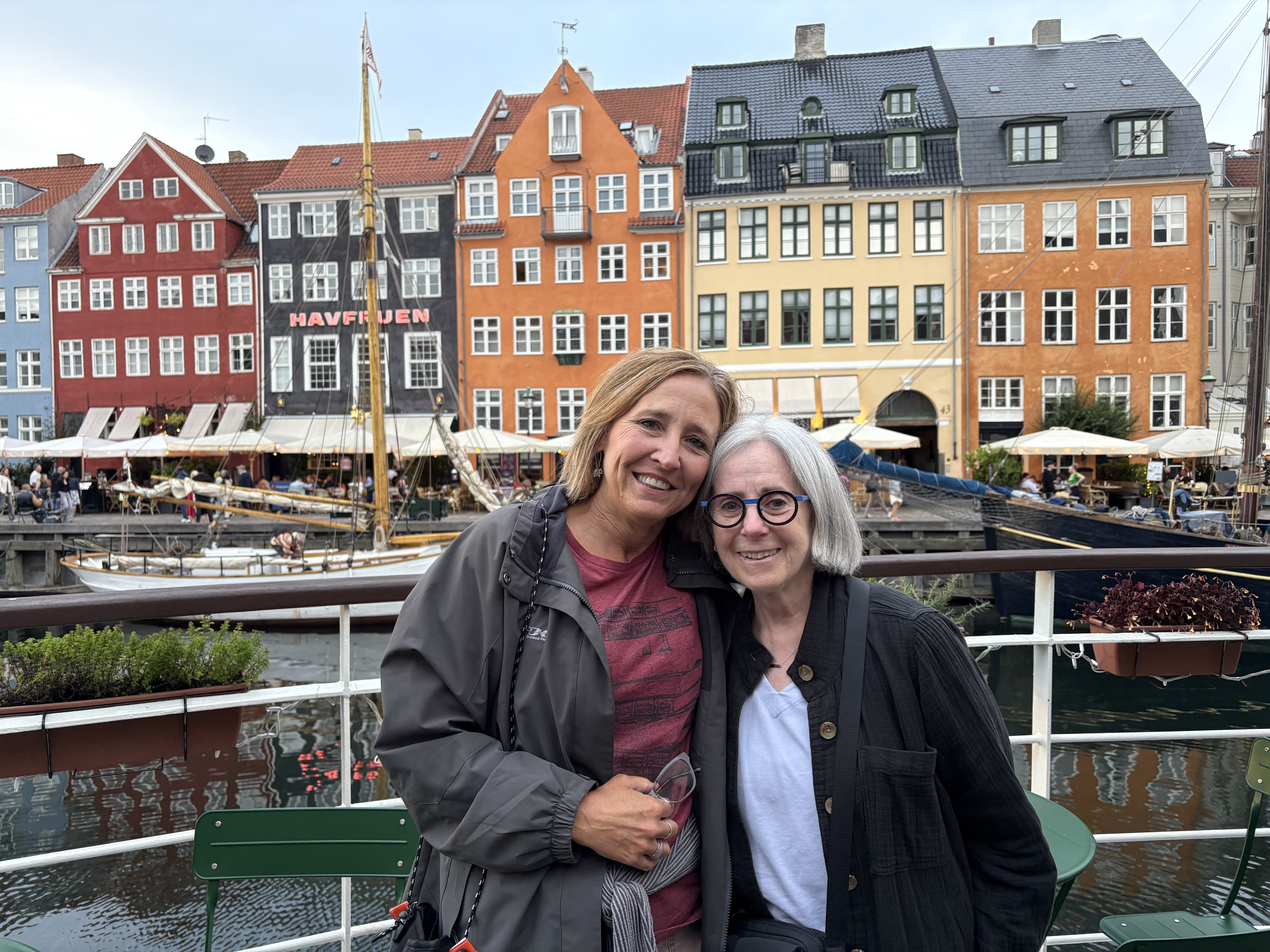
Below is from Judy Schancupp, Lerner Fellow (2002).
"One of my roles at the Georgia Commission on the Holocaust is to share with students/adults the story of my husband’s cousin who is a survivor of Auschwitz. Itka Zygmuntowicz was born in 1926 in the same town as my father-in-law in Ciechanow, Poland. This trip will add new information to Itka’s story. We visited Copenhagen and Sweden. Itka was one of the prisoners who was in an exchange program with the Swedish Red Cross and Himmler. I knew Itka so this trip felt personal…Our group visited Ramlosabrunn Health Center in Sweden. It was a beautifully landscaped area that may have received Itka and treated her. It treated survivors like Itka. Itka described in her autobiography her time in Sweden. My trip allows me to enhance her story with my pictures. Itka also spoke about her rescue on the 'white buses.' I now have a picture of an original white bus after visiting Froeslev Camp in Denmark. "
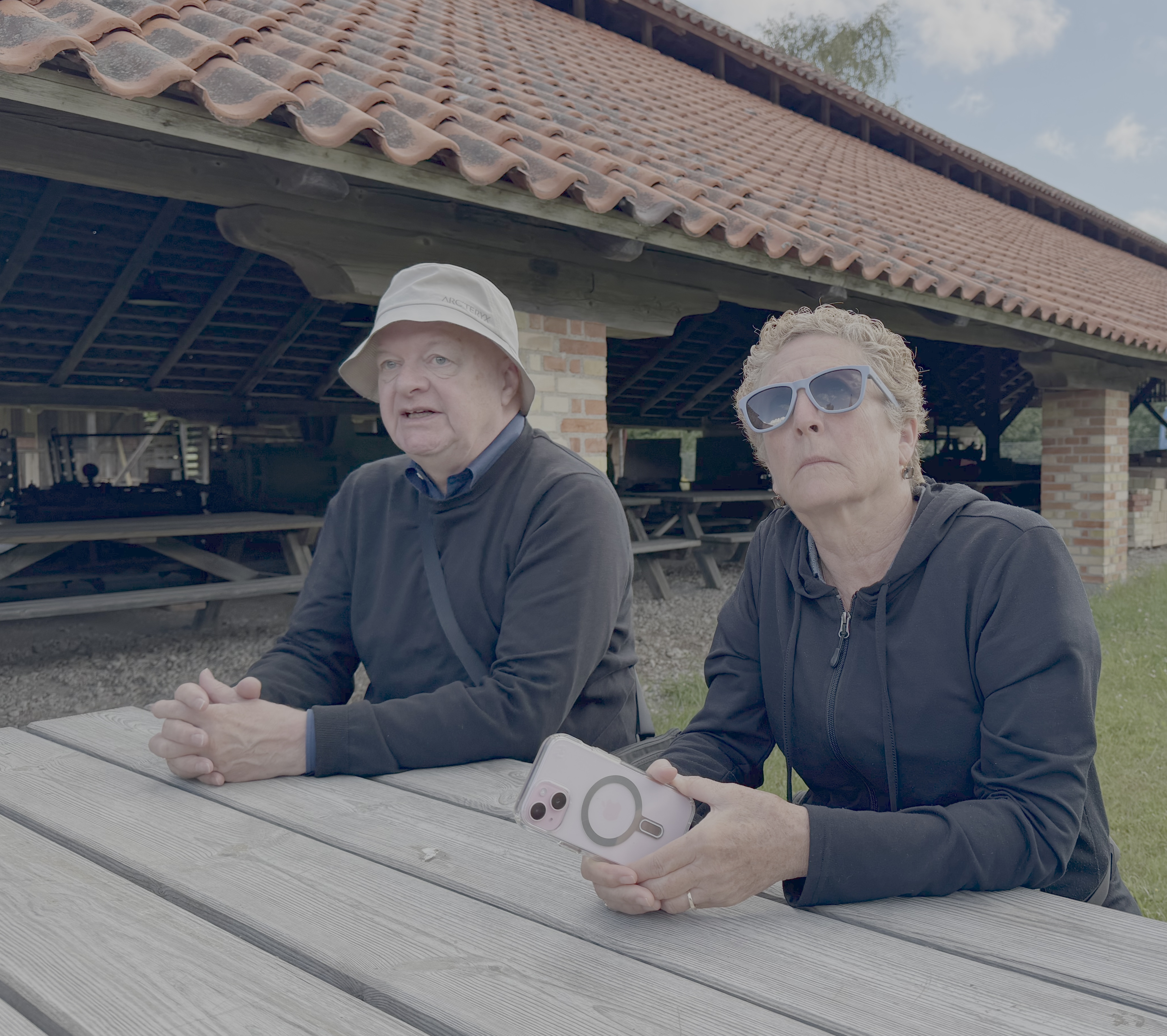
RESCUER AWARDS WERE SENT IN JULY
In July, awards were sent to each JFR supported rescuer. They thank you for remembering them and for making their lives easier with the financial help they receive from the JFR.
Below is a video of Oksana A., from Ukraine, thanking the JFR.
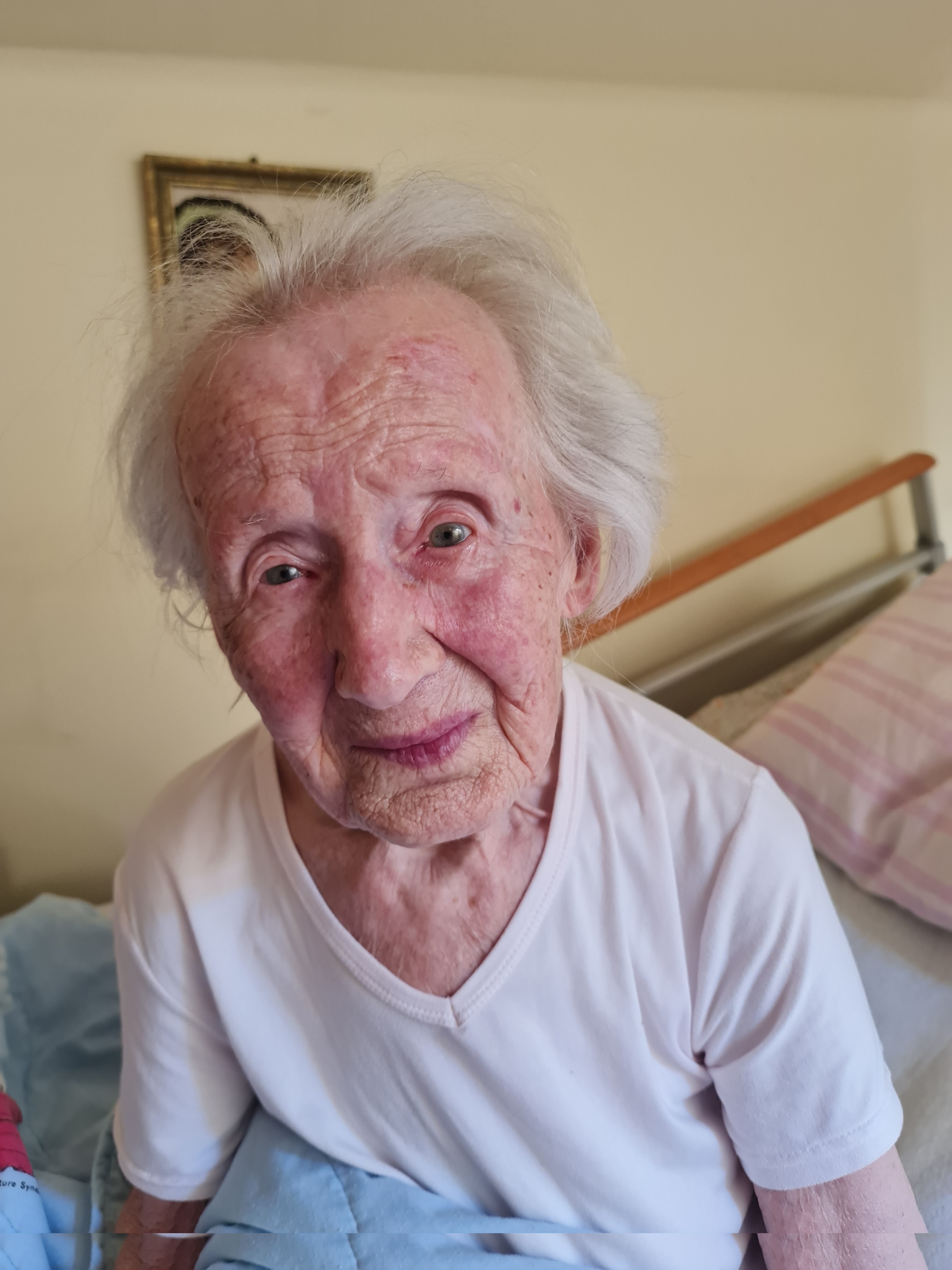
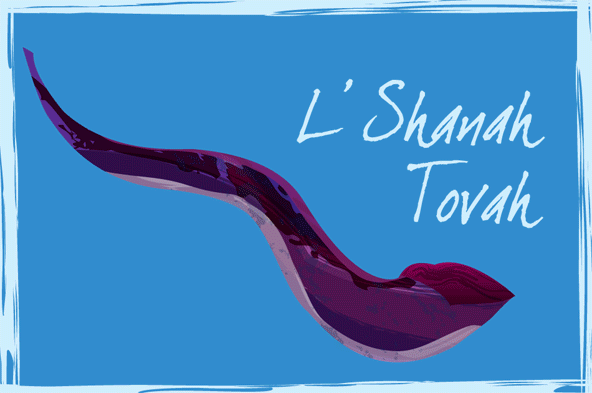
JEWISH NEW YEAR ECARDS
Usher in the New Year while at the same time supporting the work of The Jewish Foundation for the Righteous by sending a JFR eCard. Click here to schedule your eCards now! Rosh Hashanah starts Monday night, September 22, 2025.
KEEP YOUR CONTACT INFORMATION CURRENT
If you change names, home address, telephone numbers, and emails – please do let us know so we can keep your record current.